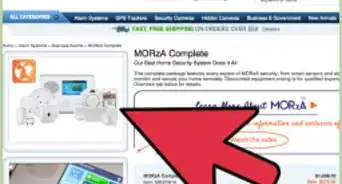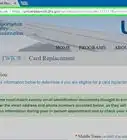This article was co-authored by Clinton M. Sandvick, JD, PhD. Clinton M. Sandvick worked as a civil litigator in California for over 7 years. He received his JD from the University of Wisconsin-Madison in 1998 and his PhD in American History from the University of Oregon in 2013.
This article has been viewed 30,804 times.
Embezzlement is a type of fraud where an employee abuses a position of trust to steal from his or her employer. Clever embezzlers are able to steal large sums of money over long periods of time without raising suspicion. In fact, embezzlers often appear to be among the business's most dedicated employees. If you suspect that an embezzler is draining your business, there are various actions you can take and policies you can implement to detect an embezzlement scheme.
Steps
Analyzing Your Business
-
1Look for unexplained profit shortfalls. Unusual drops in profits are a symptom of embezzlement.[1] Ask yourself if, based on your experience in your industry, your business is as profitable as you would expect it to be. If it is not, you may be falling victim to embezzlement.
- For example, if your business usually turns larger profits during the holidays, but your holiday profits have been merely average this year, you should investigate why.
-
2Go through your company’s records. You should periodically go through your company’s financial records to see that everything is in order. In particular, you should pay attention to the following, which may be signs of embezzlement:[2]
- The records are disorganized. Your company’s records should be organized and easy to understand. If you don’t understand what you are looking at, then an employee could be trying to confuse you deliberately in order to hide embezzlement.
- Documents are missing or late. If you can’t find bank reconciliations or other important documents, then this could be a sign that the employee is embezzling.
- Accounting procedures have suddenly changed. If you kept your financial records a certain way, then you should be alert to sudden changes. If your employee changes how he enters payments and debits, you should ask why.
- Multiple payments are made to people with the same name or address. The employee may have set up a fake account to which he is sending money.
Advertisement -
3Respond to complaints and tips. Clients might complain that they have already paid their bills. If someone is being billed multiple times, then this could be a sign of embezzlement.[3]
- Vendors might also complain about late payments. Your business should pay vendors promptly. If bills are being paid late, an employee may be stealing money.
- Also listen to your employees. One of them might spot a colleague pocketing inventory or money. You shouldn’t dismiss employee tips out of hand.
- A customer might also notice that an employee pocketed the payment instead of ringing up the sale and issuing a receipt. Commit to following up on the tip and ask the employee about the transaction at issue.
Monitoring Your Employees
-
1Note changes in employee behavior. Pay attention to your employees. Significant changes in an employee's lifestyle or attitude are indicative of embezzlement.
- For example, you might notice that an employee's standard of living has unexpectedly increased. The employee might have bought a huge house or several new cars. When an employee starts living in a way that is inexplicable based on his salary, then you should consider this a warning sign of embezzlement.[4]
- Also, an employee’s attitude may suddenly change. An employee who is usually easygoing can become evasive or appear nervous. This change in attitude is a sign that he is stealing from the business. At other times, disengaged workers suddenly become dedicated employees who never miss work or ask for help. In this situation, the change in behavior is also attributable to the employee covering their tracks in an embezzlement scheme.
- An employee may also insist on working late or never taking vacations.[5] This attitude can signal that the employee is afraid others will uncover the embezzlement if he is gone.
-
2Note employee defensiveness. If you ask an employee to explain why documents are missing, then pay attention to how the employee responds. Someone who becomes defensive or annoyed at reasonable questions could be committing embezzlement.
- Also, an employee who heavily criticizes other employees is a risk. They could be trying to shift the focus onto others.
-
3Don’t ignore risk-taking behavior. You might think that what your employees do on their own time is their own business. In a sense this is true. However, your employees may engage in behavior that indicates embezzlement. For example, look for the following risk-taking behavior:
- Gambling. When someone gambles to an extent that they endanger their finances, then this person could be at risk of embezzling money to cover the losses. Pay attention to employees discussing multiple trips to Las Vegas or Atlantic City, or who spend considerable sums of money on the lottery.
- Bragging about exploits. Someone who is a loud risk-taker might also take risks by helping themselves to funds. You should monitor any employee in a position of authority who brags constantly about their private exploits.
- Drinking and partying excessively. Employees who party and socialize with questionable characters are at risk of embezzling. They may be funding the fun nights out illegally with company money.
-
4Pay attention to medical and other emergencies. Some employees embezzle because they need to cover medical expenses which they cannot otherwise pay.[6] Note any employee who has suffered a tragedy such as a sick family member or a house destroyed by fire. This person is at an increased risk of committing embezzlement.
- Obviously, an employee who has a sick child is not automatically embezzling. And you shouldn’t accuse anyone of embezzlement without proof. Nevertheless, you should investigate simply to confirm that the person is not taking money. Ask to see the company’s books and go through them carefully.
Preventing Embezzlement
-
1Open account statements personally. You may be tempted to delegate all financial responsibility to your employees. At a minimum, however, you should open and read your business's account statements.
- Have bank statements sent to your home instead of to the business. You can then review the statements for suspicious activity. You might spot forged check signatures, missing check numbers, payments to unknown parties, or duplicate payments.
- Duplicate payments look like an accident but may be intentional. If the employee is working with someone else on the outside, they could be sending money to that person at regular intervals.
-
2Monitor checking accounts. In addition to reviewing your bank statements every month, review your business account balances and transaction histories more frequently. Checking your accounts more often will help prevent short-term embezzlement schemes, such as “check kiting.”
- Check kiting is a scheme where the embezzler writes himself or herself a very large check from a business account. To prevent that check from bouncing, the embezzler artificially inflates the balance in that account by writing another check to that account from a second business account.
- With proper timing, the first check will clear and the embezzler can disappear with a large sum of money before the second check bounces.
-
3Examine checks. Your bank statement should include copies of checks written from the company account. Watch out for signatures that appear to be forgeries.
- Also look for duplicate check numbers. Duplicate numbers might indicate that the first check went to the rightful payee while the duplicate was deposited by the embezzler.
-
4Track employee payments. A common embezzlement scheme is known as "lapping." Lapping occurs when the embezzler steals some of a customer's payment but then makes up the difference with some funds from a subsequent customer's payment.
- The embezzler must continually make up the differences from later payments. This scheme can go on indefinitely, and each customer payment will appear to have been received later than it actually was.
- To prevent “lapping,” communicate with your customers to verify when they made their payments. If you notice that your bookkeeper is posting payments late, the bookkeeper may be engaged in a lapping scheme.
- You can also help prevent this scheme by dividing the duties of handling cash and posting payments to customer accounts between two different employees.
-
5Review all refunds. Embezzlers can pocket money by creating phony refunds. To do this, the embezzler creates a fake record that a customer returned some merchandise or overpaid his or her bill. The embezzler then pockets the "refunded" money.
- Scrutinize employees who issue an unusual number of refunds. You can then set up a meeting with the employee in order to discuss the high number of refunds.
- Also try to get customers to sign something when they get a refund. The embezzler would then have to forge a signature, which could dissuade them from committing embezzlement in the first place.
- Any employee who issues a refund without a signature could then be monitored.
Implementing Policies
-
1Divide employee responsibilities. If one employee handles all of the business’s finances, he or she has the opportunity to embezzle. For example, a bookkeeper who does all of the billing, collecting, disbursing, banking, and record-keeping for the business is well-positioned to steal from you.
- This bookkeeper has the opportunity to divert assets and the means to cover up the theft by altering the business’s transaction records.
- You can make embezzlement more difficult by dividing responsibilities. For example, you could require one employee to keep records and require another employee to sign all checks. You can also take over some of those responsibilities yourself.
-
2Make employees work together. Employees who frequently work alone have greater opportunities and temptations to steal business assets. If a task must be performed away from the office or during times when no one else is around, assign two employees to do the task together. Those employees can monitor each other, making it less likely that one will steal from the business.
- Require that two employees open and close the office together each day. This ensures that no single employee is alone with the cash, merchandise, or business records before or after business hours.
-
3Enforce mandatory vacations. Bookkeepers who embezzle are often engaged in long-term schemes under which they must continually manipulate the business records to cover their tracks. These employees cannot afford to let anyone else scrutinize their work, so they refuse to take sick days or vacations.
- He or she may also refuse to assign work to others even when overloaded with tasks. Require your employees to use their vacation days, and have another employee (or an outside accounting service) handle the absent employee’s responsibilities.
-
4Engage in honest business practices. Some sources indicate that a culture of dishonesty within a business is linked to embezzlement. Employees may be more likely to steal from the business if they believe that the business treats employees unfairly or deals unethically with others.
- Accordingly, you should create a culture of openness, honesty, vigilance, and integrity. Hold your business to high ethical standards.
- You also need to signal that you have zero tolerance for fraud or dishonesty. This means punishing those who are dishonest or who engage in theft. If you let small infractions pass without a reprimand, then you are signaling to other employees that they are free to steal, also.
- To encourage honest reporting of violations, you should create a whistleblower policy and publish it in your employee manuals or handbooks. This policy will tell employees that they can report suspected fraud and dishonesty without fear of reprisal.
- Make sure you know the right ways to report embezzlement, whether you intend to handle the situation internally or involve law enforcement.
-
5Create an employee assistance program. You can also minimize theft by having an employee assistance program. These programs provide a place for employees to disclose problems they have with addiction, gambling, or their health—all inducements to embezzle.
- The employee assistance program you use should provide a hotline employees can call at any time of day.
- An effective employee assistance program will direct employees to the resources they need to address addiction, gambling, or other problems.
Warnings
- This article is intended as legal information and does not provide legal advice. If you need legal advice, contact a licensed attorney.⧼thumbs_response⧽
References
- ↑ http://smallbusiness.findlaw.com/business-finances/embezzlement-warning-signs.html
- ↑ http://smallbusiness.findlaw.com/business-finances/embezzlement-warning-signs.html
- ↑ http://smallbusiness.findlaw.com/business-finances/embezzlement-warning-signs.html
- ↑ http://smallbusiness.findlaw.com/business-finances/embezzlement-warning-signs.html
- ↑ http://smallbusiness.findlaw.com/business-finances/embezzlement-warning-signs.html
- ↑ http://nonprofitinformation.com/embezzlement-nonprofit/









































































